8/1/2022
CAST Highlights, Part 2
Chris Beytes, Bill Calkins, Jennifer Zurko, Paul Pilon & Osvaldo Cuevas
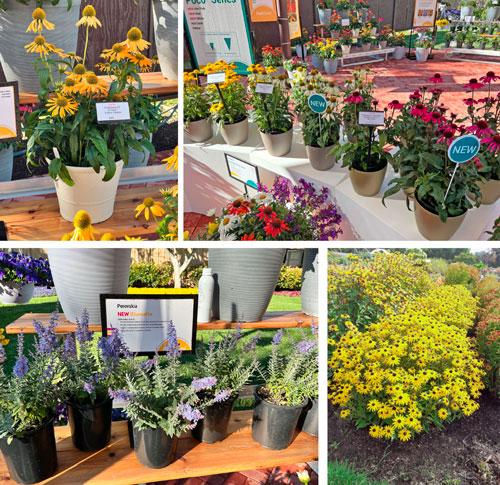
New Perennials
Echinacea Artisan Yellow Ombre (Kieft Seed)
Kieft has definitely had its share of breakthroughs in the past few years, not the least of which is the Artisan series of echinacea. This is the F1 seed series that is available in individual colors. The newest color? Yellow Ombre, which joins Red Ombre and Soft Orange. The seed comes in an “amplified” form, meaning it is achieving at least 85% germination in lot tests. Those are good numbers for echinacea seed! Hardy to Zone 4a.
Perovskia Bluesette (Kieft Seed)
Bluesette proudly holds the honor of being the first and only compact, branching and early perovskia from seed. This great alternative to vegetative cultivars can now be using in the front of the landscape as well as in nursery containers, premium patio pots and mixed combos. Hardy to Zone 4a.
Rudbeckia Goldblitz (Kieft Seed)
Goldblitz offers much easier programmability than the ever-popular Goldsturm. Goldblitz is truly a first-year flowering perennial with no juvenility issues, absolutely no vernalization required for uniform flowering, and it blooms under slightly shorter daylengths (14.5 hours vs. 15 hours for Goldsturm). These attributes allow this Fleuroselect Gold Medal winner to flower up to three weeks earlier than Goldsturm. It can be easily programmed for early summer through fall sales. Hardy to Zone 3.
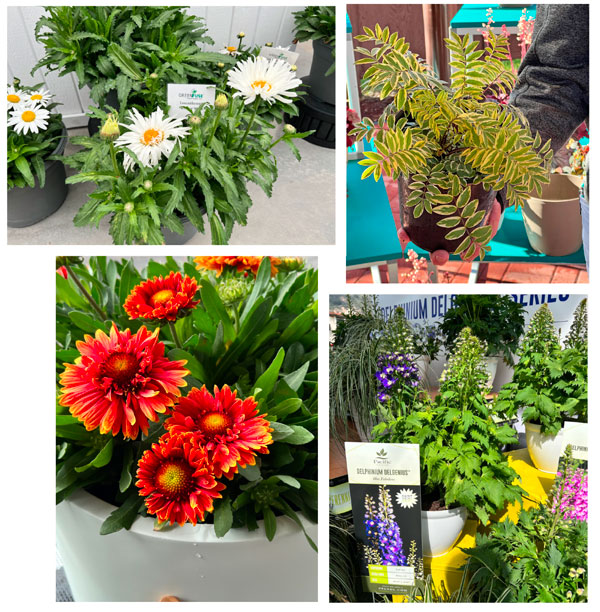 Echinacea Sombrero (Darwin Perennials)
Echinacea Sombrero (Darwin Perennials)
The Sombrero series has become one of the best and most reliable echinacea series on the market. Then its offspring, the Sombrero Poco series, was born and it also has the potential to become an industry standard. The cultivars in the Sombrero Poco series have uniform habits, uniform flowering, first-year programmable flowering, great vigor and compact growing habits. This year, Darwin Perennials is adding White, Hot Red and Pink to the series. The Sombrero Poco series reaches 12 to 14 inches tall and is hardy to Zone 4b. It’s great by itself or when used in mixed containers and color bowls.
Polemonium Golden Feathers (Darwin Perennials)
Looking to brighten up your shade garden? Golden Feathers will do just that. It has super attractive yellow and green variegated foliage. It has a much brighter appearance and holds its color better than existing varieties. The bluish-purple flowers are a welcome bonus in the late spring and early summer. Hardy to Zone 5b.
Leucanthemum Whisker White (Green Fuse)
A complete reinvention of the “crazy daisy” type of shasta daisy, with unique feathery flowers. Whisker White is daylength neutral and requires zero cooling hours to bloom. This makes scheduling easy and allows you to produce it throughout the entire season—including fall programs. Whisker White has massive 5- to 6-in. flowers and continues blooming in the garden all growing season. Hardy to Zone 4.
Gaillardia RealFlor Sunset Orange Ruffles (PlantHaven)
This new addition to the Sunset collection has a unique double flower form and a tidy, clumping habit. It finishes in 10 to 12 weeks in a 1-gal. container from a 72-cell liner and is available as TC from Poland. Hardy to Zone 5.
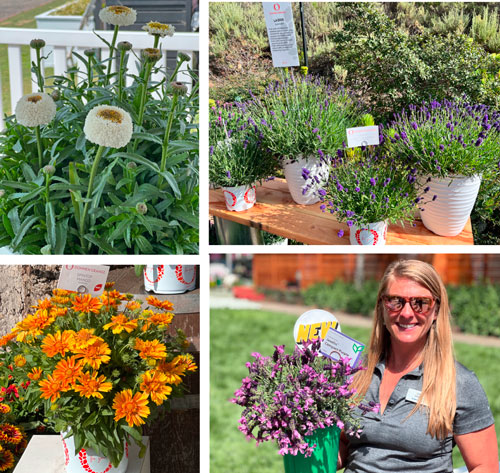 Delphinium Delgenius Blue Fabulosa (Pacific Plug & Liner)
Delphinium Delgenius Blue Fabulosa (Pacific Plug & Liner)
Delphiniums are always impressive in bloom, so we were happy to see three new ones in the Delgenius interspecific delphinium series from PP&L. Blue Fabulosa has huge flower spikes and is the earliest in the series. Chantay is covered in pink flowers, and Neva is a true white. Hardy to Zone 3.
Leucanthemum Real Tiny Bubbles (PlantHaven)
The buds on this pompon-type Shasta daisy open flat, then fill out to form fully round white blooms that look like marshmallows on a stick. Hardy to Zone 5.
Lavender La Diva (Dümmen Orange)
The La Diva collection covers Spanish, French and the dentata species with options for all seasons. Last year, we told you about the La Diva English lavenders, but the message was clearer this year now that we’re back to SPRING Trials, not Summer Trials. Seeing them in full flower this early proved their claims that growers, even in the north, can produce a flowering crop to send to market in May (12 weeks to flower, from cuttings). The trick is in the genetics, as well as stock management and shipping.
Gaillardia Spintop Mango (Dümmen Orange)
The gaillardias in the Spintop collection are vegetative, not from seed, so they’re true perennials, not biennials that come back from seed—that’s the difference. New to the collection is Mango, a breakthrough color, they say. Imagine, a perennial that will grow from Alaska to Florida! Cold hardy to Zone 3.
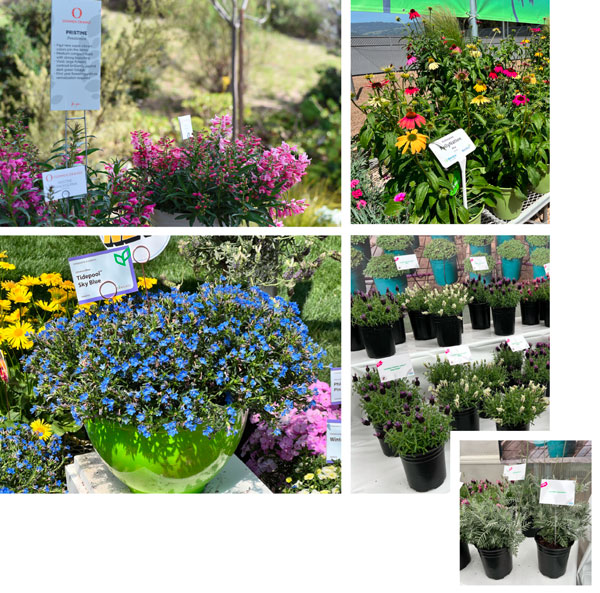 Penstemon Pristine (Dümmen Orange)
Penstemon Pristine (Dümmen Orange)
Dümmen has reselected their Pristine Penstemon series for cold hardiness. These are new genetics that replace the existing varieties. Princess Pink, Nightshade and Primrose are all first-year-flowering with no vernalization needed.
Lavender Javelin Compact Purple (Syngenta)
An L. stoechas with a habit as its name suggests—compact. And it’s fast to finish, making it a good choice for annuals growers. It’s being shown off by Syngenta’s Olivia Morgan. Hardy to Zone 7.
Lithodora Tidepool Sky Blue (Syngenta)
This is the first time Syngenta is offering this crop in their perennial lineup. It’s an ideal early spring perennial with true blue flowers. Hardy to Zone 5.
Echinacea Polly Nation (Benary)
This new series of seed echinacea includes five colors and one mix. It is one of the offerings in Benary’s BeGreen sustainable seed program. Hardy to Zone 5.
Lavender (Hishtil)
These two lavender introductions from Hishtil couldn’t have been more different. The LavLov series of Spanish lavender is touted for its earliness and compact habit, launching with Blue, Dark Blue, Purple, White and Deep Purple. On the opposite end of the spectrum was Lavandula canariensis—a species so new to Hishtil that it hadn’t even been given a trade name when we saw it. As its name suggests, it’s a Canary Islands-native with extremely long flower stems (use it for cut flowers!), good drought tolerance and a full measure of uniqueness.
New Shrubs/Woody Ornamentals
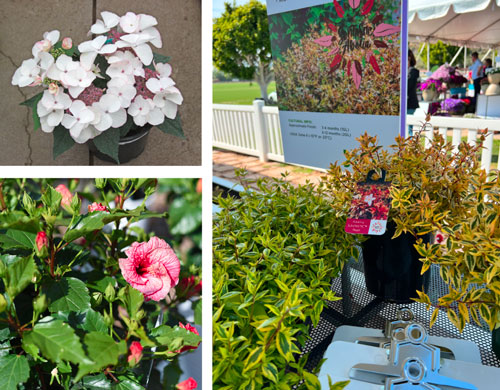 Hydrangea Game Changer White (Green Fuse)
Hydrangea Game Changer White (Green Fuse)
A new addition to the Game Changer collection, which we saw for the first time last year, White is a lacecap-type that they say has strong holding power at retail. Hardy to Zone 5.
Abelia Suntastic Peach (PlantHaven)
Abelia is a pretty, variegated Zone 6 shrub that can double as a component plant in combos. And it’s reasonably fast—you can produce a quart pot in about 16 weeks from a 72-count liner.
Hydrangea Princess Bride (Southern Living/Sunset Collection)
An interspecific hybrid with lacecap blooms that form all along the stem, from spring to fall. It grows 3 to 4 ft. tall and is hardy from Zones 7b to 10.
Azalea Encore Autumn Starburst (Southern Living/Sunset Collection)
Hardy from Zones 6a to 10, this new azalea cultivar is on the small side at 3 ft. by 3.5 ft., with deep green foliage and a very good floral display. Flowers are coral pink edged with soft white. It’s a great contrast and a vibrant look from a distance.
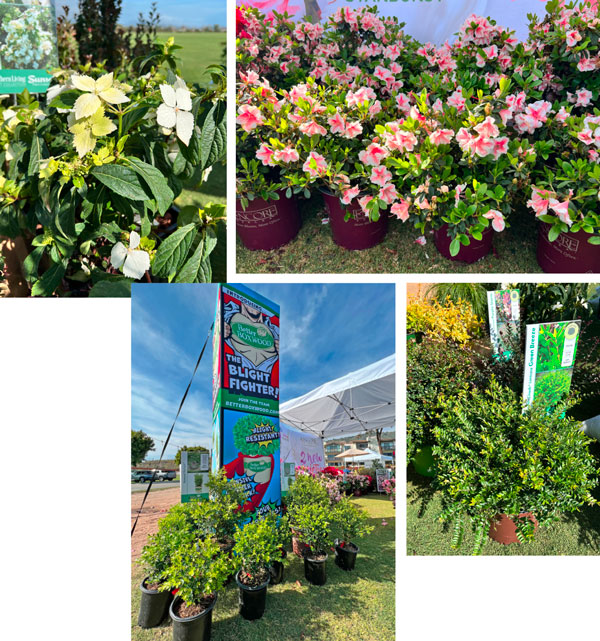 Lonicera Garden Clouds (Southern Living/Sunset Collection)
Lonicera Garden Clouds (Southern Living/Sunset Collection)
An interesting collection of small-leafed green shrubs that can serve as replacements for boxwood in Zones 6 to 9. Choose from Green Breeze, Copper Glow and Purple Storm.
Better Boxwood (Southern Living/Sunset Collection)
This is a new line of blight-resistant boxwoods bred in Belgium after years of breeding and selection (over there they call them Better Buxus). The result is four different boxwoods: One for tall hedges, one for wider hedges, one for standard-sized hedges and one for lower hedges, like knot gardens and the like. We can’t vouch for their disease resistance, but we were told they’ve been planted at some premier gardens in Europe, so they’re certainly getting a good test.
Hibiscus Caribbean Collection (Dümmen Orange)
This tropical hibiscus in this Hibiscus rosa-sinensis collection were bred in Spain and the Netherlands, giving them a broad range of climates in which they thrive. Also, we were told they are less susceptible to bacterial leaf spot. The collection starts with six colors, but they have more than 30 in quarantine awaiting the selection process, so expect lots of pretty tropical hibiscus to come from Dümmen Orange. By the way, stock plants will be produced domestically. GT